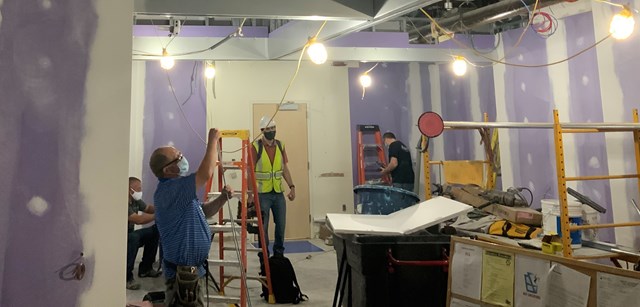
COVID-19 Construction Considerations
How to Stay Safe on a Jobsite During a Global Pandemic
Let’s face it - 2020 has proved to be quite challenging. The historical knowledge that served effectively in the past may have been found wanting in recent months. This pandemic has shown the need for quick tactical and strategic thinking.
Guardian Medical Systems was in the middle of a half dozen hospital projects when COVID-19 hit, presenting unique concerns and solutions for each jobsite. Delaware, New Jersey, and Pennsylvania were initially hit hard and responded with sweeping shutdowns further complicating construction efforts.
Shutdown Exemption
These shutdowns were the first hurdle to overcome to proceed with construction. Because Guardian focuses solely on hospital pharmacies, cleanrooms and labs, the state governments endorsed our full-time operation as long as CDC and state safety guidelines were followed. We then lobbied the state governments for the ability to extend our exemption to our installers and manufacturers. Once these exemptions were granted, construction was able to proceed.
Worker Safety
The next obstacle was how to keep our crews safe during the installation phase. Traditionally this requires large numbers of people to be onsite, working near each other. Several steps were taken to reduce the risk of exposure. To start, a screening procedure was put together with help from the hospital: taking workers temperatures, asking them about symptoms, and keeping a log of all personnel on-site. Further, limits were set on the number of people allowed in a room at a time. The use of PPE was required, and extra supplies were provided. Handwashing and sanitizing stations were set up throughout. Safety and strict adherence to these established guidelines were paramount.
Site Access
Another major hurdle to overcome was providing access to the sites. Several sites required external entrances to allow for worker access without them having to go through the hospital. In one instance, an external scaffold stairwell was built to a second-story window. In cases where larger items needed to be brought through interior spaces, all deliveries were tightly scheduled (oftentimes for off-hours) and strict cleaning protocols were enacted after completion. Again, this was all done to reduce any chance of exposure for the hospital staff, patients, and workers.
Clear Communication
All of this was made possible by having clear and constant communication between the construction team and hospital staff/management. These projects have a lot of moving parts and designating someone to oversee the coordination of all these groups cuts down on miscommunication and increases the safety of all involved. To this end, a strong project leader is invaluable.
This pandemic has been extremely trying. Challenges present themselves from new angles every day. As the pandemic continues, taking the time to enact these protocols will help your projects run smoothly and, most importantly, keep your workers safe.
